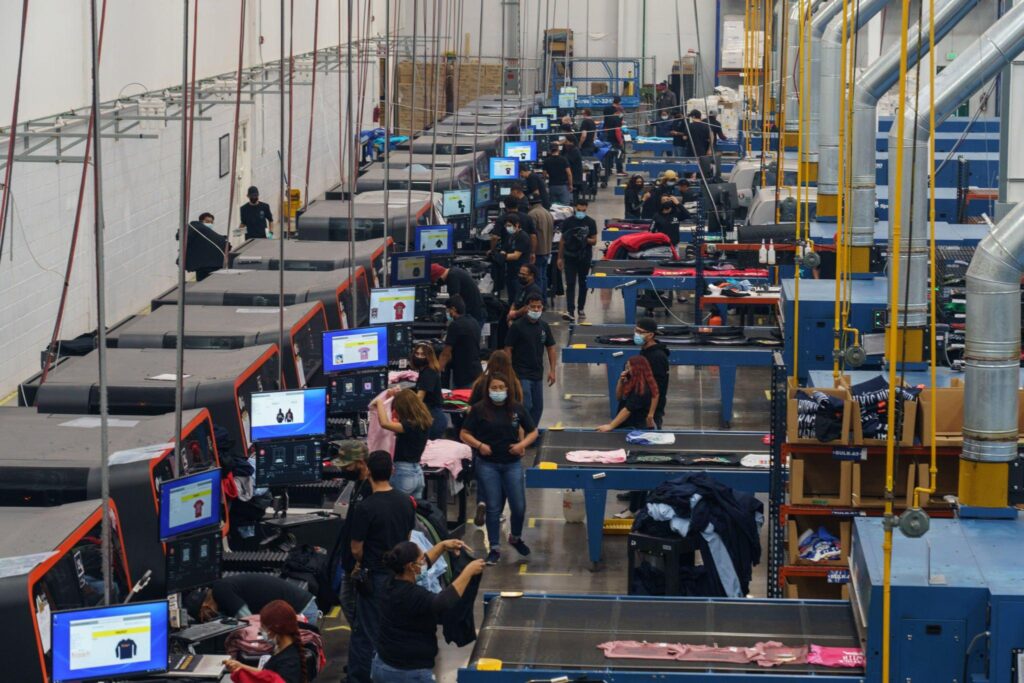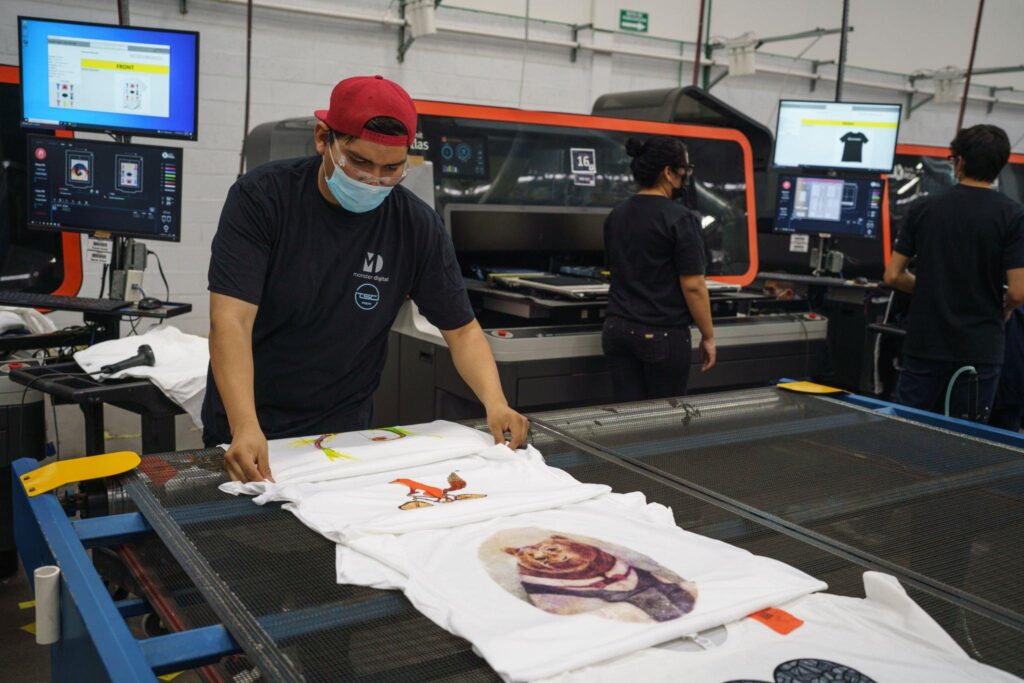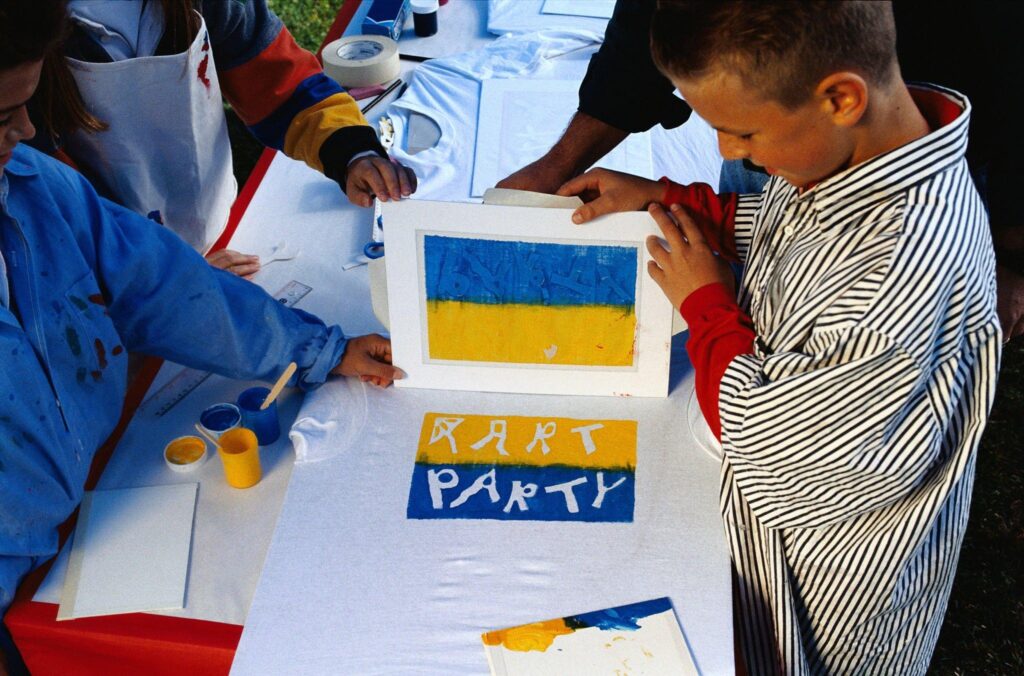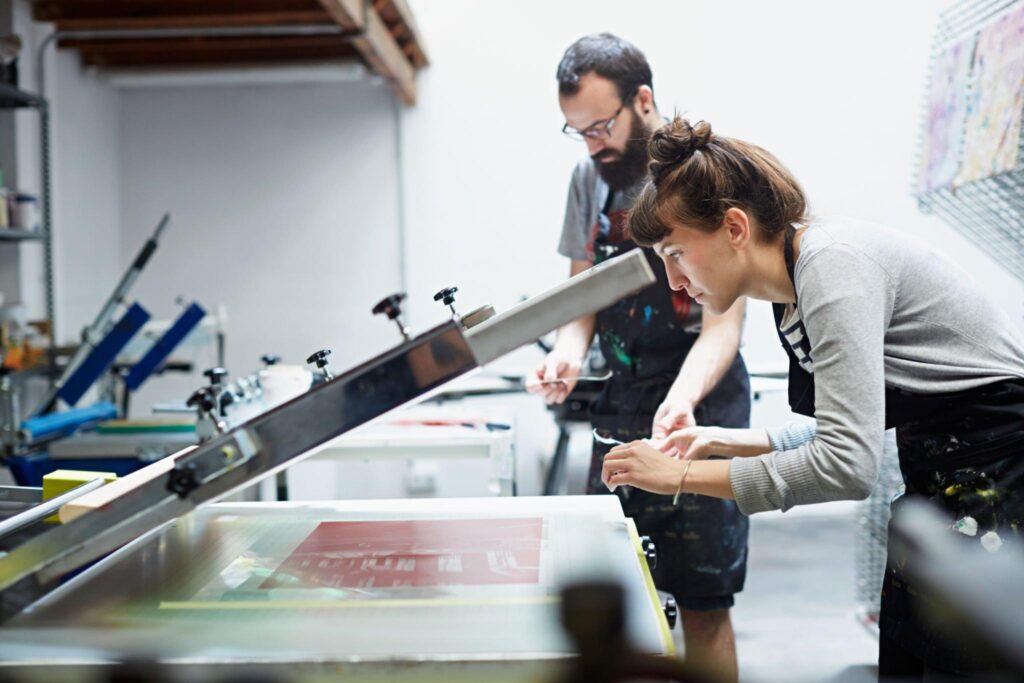You’ve probably heard about DTG printing vs screen printing if you’re trying to create and print your personalized t-shirts.
Custom prints can be applied to fabrics via direct to garment vs screen printing.
But how do these two t-shirt printing techniques differ from one another? When ought one to be used instead of the other? If you’ve never produced your personalized t-shirts, the subject can be a little confusing, so we’ve put up this short guide. Here are the four most often asked questions:
- Differences of DTG printing vs screen printing
- Can you screen print on a DTG shirt?
- How long do DTG prints last?
- What is more durable DTG or screen print?
Following these t-shirt printing best practices will allow you to make your shirts in a variety of methods if you’ve never printed your bespoke shirts before. Understanding the printing process can help you make the best choices whether you’re making personalized t-shirts for a creative endeavor, a fundraising effort, or another reason.


Screen Printing
Ink is applied to the garment using the best screen printing technique, which involves pushing it through a woven screen or mesh stencil. The ink lies in a coating on top of the clothing rather than soaking into it directly. One of the most often used techniques for clothing manufacturer design that has been around for a while is screen printing.


DTG Printing
A popular printing technique, DTG, produces eye-catching, vibrant graphics. What is DTG printing then? Direct of garment printing, as the name suggests, involves applying ink directly to the garment and then pressing it to dry. Even though it’s one of the most basic types of garment printing, when done correctly, it’s unquestionably one of the most powerful.
How Can You Tell The Difference Between DTG And Screen Printing?
Screen printing is a common technique for getting plastic-based ink through the mesh and onto the clothes. It is the most widely used and flexible printing technique. The more recent method of spraying ink onto the cloth is called DTG. Particularly for patterns with numerous colors, it is the quickest and simplest method of printing.
DTG printing is a more recent approach that employs a printer to apply the ink to the shirt. Screen printing is a more classic method that requires pressing the ink onto the t-shirt fabric through a stencil.


Screen printing vs DTG printing
DTG vs. Screen Printing-The vibrancy
Brightness and color saturation together make up vibrancy. Although DTG printing has advanced significantly in recent years, it still has a less vibrant appearance than screen printing.
Screen printing stands out as the technique to use when you want your design to stand out on the shirt.
-
Ink for screen printing
Plastisol ink is typically used in screen printing and is made up of PVC particles suspended in a plasticizing emulsion (there are eco-friendly, non-PVC Plastisol inks on the market). Since this kind of ink is so opaque, it can provide a bright white under base on black clothing, which is essential for vibrancy.
Additionally, (literally) Plastisol inks are available in the most vivid colors, including fluorescents. The best ink manufacturers provide a uniform palette of base colors that can be blended into tens of thousands of unique Pantone hues.
-
DTG ink
However, digital printing utilizes water-based inks particularly on darker clothes, which, lack the opaqueness and brilliance of Plastisol inks. The final outputs from DTG machines are not quite as brilliant as those from screen printing, even though they can offer a respectable under base (plastic particle pretreatment and titanium dioxide white ink).
On the plus side, utilizing four to six colors allows you to create a spectrum of hues as opposed to using individual colors. The CMYK color model—cyan, magenta, yellow, and black—is the foundation of process printing, on which DTG is built. Newer machines also incorporate red and green for a wider color spectrum. Discover more about CMYK right here.
The colors are vivid and vibrant, but they also have a semi-transparent quality. This is useful for blending, but not for vibrancy (more on it later).


Screen Printing vs. DTG-Color Combining
By combining fewer colors, color blending enables the creation of a variety of hues and smooth gradients. DTG printers excelled at doing just that. With print resolutions of 1200 dpi with diffusion dither, the dots are not discernible to the unaided eye.
Digital printing is a smooth operator with color blending, handling gradients, minute color details, subtle components like smoke that fade into the garment, or exact mixes like those required for skin tones.
DTG inks are water-based and more transparent than Plastisol inks, which makes them much easier to overlap and combine. This gives DTG the advantage in color blending and enables it to create gorgeously even smooth gradients.
In screen printing, the same number of colors can be used, but halftones are used to combine a variety of hues using Plastisol, a method known as the “simulated process.” However, color mixing accuracy is more difficult to achieve and less efficient due to the preparation required—especially for smaller orders.


DTG vs. Screen Printing-Details
DTG is substantially superior to screen printing in handling details. Fine lines, tiny text, textures, and microscopic elements can all be found in the design’s smallest components. DTG consistently maintains even the minutest details throughout the print run.
Details can be a challenge for screen printing to hold. Because of this, we give screen-printed jobs extra care and make sure we properly set up your order. We occasionally suggest that consumers make a little compensatory adjustment to their artwork. Increasing the text size is one example.
A photographic image or one with gradients (fades, blends) will call for halftones when screen printing (tiny dots). If you’ve ever used a magnifying glass to read a comic book, you might recall seeing them. If you look closely enough, these dots are visible on a T-shirt.
Although DTG employs diffusion dither and can print at up to 1200 DPI, they also use halftones. More precisely, this halftone is frequency modulated rather than amplitude modulated. Although it occasionally produces a grainy appearance, it greatly improves the reproduction of minute details.


DTG vs. Screen Printing-Durability
What is more durable DTG or screen print? The longevity of a print’s quality is its durability, a problem that Direct-to-Garment has had since its inception. You would be lucky to get 10 washes out of a T-shirt in the early days of DTG before the colors started fading. A well-made DTG printed nowadays can withstand numerous items of washing.
If done correctly, screen printing doesn’t have this issue with durability. Even Plastisol can begin to disintegrate or fade if the ink is not applied or cured properly. But every one of us still has the family reunion shirt from 20 years ago that is still in our drawer.
Screen printing is more washable than DTG, but it doesn’t imply that DTG isn’t as durable. If there is an issue and a DTG print is not as durable after washing, it may be because the pretreatment or curing process was improper.


DTG vs. Screen Printing-Consistency
There aren’t many genuinely constant things in life, but when printing a batch of DTG t-shirt printers vs screen printing, we want them to all look the same. DTG also excels in terms of consistency. There are essentially no variables to be concerned about because the machine manipulates a digital file and prints it directly onto the garment.
If the project is completely set up and each item is printed identically, screen printing can be consistent.
Screen tension, mesh, ink viscosity, dot gain, flash dry temperature, squeegee sharpness, pressure and angle, registration, and many other factors can affect the screen printing process. The list continues. When you combine all of these factors, there is probably going to be some fluctuation because each of these factors has the potential to make a difference on its own.
Digital direct-to-garment printing is the only option where total consistency is required.
DTG vs. Screen Printing-Popularity
In terms of popularity, everyone adores the champion. For decades, screen printing has been the most popular option. The primary characteristics that consumers look for in a bespoke tee are ink brightness, durability, and affordability, which is where this traditional print approach truly shines.
It’s wise to choose what’s in style when ordering shirts for your staff, as giveaways, or specifically for resale if you want to guarantee that your workers or customers are satisfied. People typically think of screen printing when they think about T-shirts.
Popularity might not matter as DTG technology becomes more developed and pervasive to the point that people can’t detect the difference. The fan favorite up to then is screen printing.
DTG vs. Screen Printing-Design
Either printing method will produce a high-quality t-shirt when carried out by a pro using the proper tools. However, depending on your design, a few significant variances still apply.
While screen printing creates multiple layers, DTG printing just leaves one layer of ink behind to create your finished image. This has several significant impacts, especially on the way you use color in your design:
- DTG print vs screen print will result in a brilliant, long-lasting design with more saturated colors. The quantity of colors you utilize is however constrained by the time-consuming procedure of creating several stencils from your design.
- The single layer of ink used in DTG printing results in a little more faded design, but there are no restrictions on the number of colors you can use. However, various restrictions make some color combinations challenging. For instance, printing designs using light-colored ink on dark fabrics might be challenging for digital printers.
This implies that particular t-shirt design styles work better with each technique. While DTG printing can hand colors complicated designs in more colors, usually on light-colored fabric, screen printing is best for simpler, styled design colors graphics, or text in a few colors.


Can You Screen Print On A DTG shirt?
The least expensive approach to printing hundreds of shirts is direct screen printing. The most cost-effective technique to print a few shirts is via DTG printing.
Two of the most popular methods for printing customized t-shirts are direct-to-garment printing vs. screen printing.
DTG printing functions similarly to your home office’s inkjet printer. The digital picture or graphic file is translated by the printer onto your white t-shirt!
What is the DTG printer do? Large-scale DTG printers can print a variety of designs in a variety of colors. A single layer of water-based ink is applied, and it immediately sinks into the fabric of the garment. Although the printing DTG technique is accurate and yields excellent results, the ink does not penetrate the cloth as deeply as other techniques like screen printing.
DTG printing is a wonderful fit for modest orders. DTG printing is outclassed by screen printing for large orders. Both approaches are tools for meeting client needs!


How Long Do DTG Prints Last?
It’s good knowing that printed clothes can withstand 50 washes before losing their print. However, most people concur that DTG prints will endure longer than that.
A different perspective is that direct-to-garment printing typically lasts the entire life of the garment and deteriorates with it. Your garment degrades when you wash and wear it repeatedly. You’ll note that while this takes place, the ink on the fabric begins to fade as well. Also, get to know about the sublimation vs screen print process to get more ideas.
Final Words
It depends on your order’s quantity, the design, and the clothing that will be printed. You can rely on our project managers and printing professionals to offer the ideal print solution for your unique requirements.
You’ll get the best value over time by finding a custom-printed t-shirt manufacturer that can provide the best of both DTG and more conventional screen printing procedures. You’ll be able to design a personalized t-shirt more effectively by knowing the distinctions between the two approaches!




